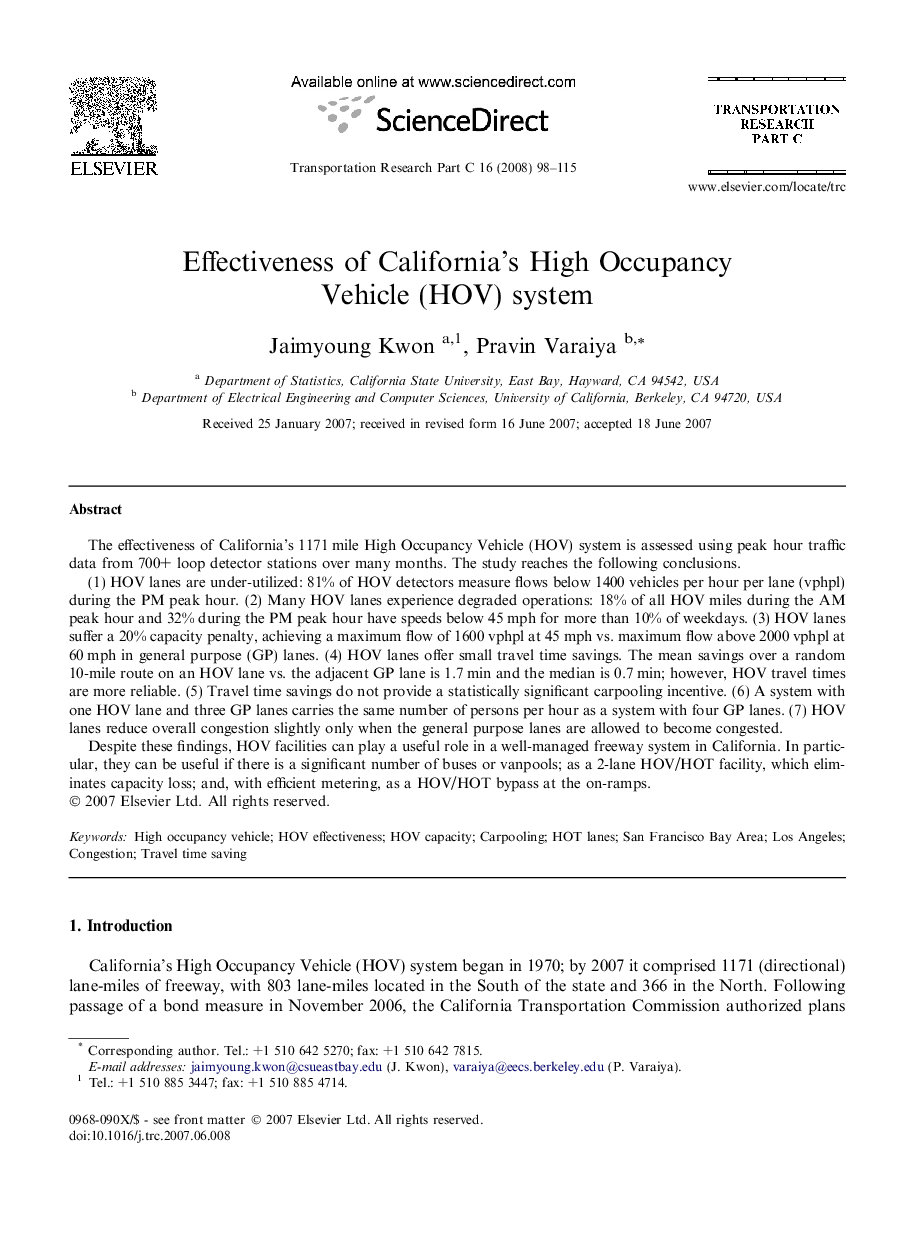| کد مقاله | کد نشریه | سال انتشار | مقاله انگلیسی | نسخه تمام متن |
|---|---|---|---|---|
| 525380 | 868913 | 2008 | 18 صفحه PDF | دانلود رایگان |

The effectiveness of California’s 1171 mile High Occupancy Vehicle (HOV) system is assessed using peak hour traffic data from 700+ loop detector stations over many months. The study reaches the following conclusions.(1) HOV lanes are under-utilized: 81% of HOV detectors measure flows below 1400 vehicles per hour per lane (vphpl) during the PM peak hour. (2) Many HOV lanes experience degraded operations: 18% of all HOV miles during the AM peak hour and 32% during the PM peak hour have speeds below 45 mph for more than 10% of weekdays. (3) HOV lanes suffer a 20% capacity penalty, achieving a maximum flow of 1600 vphpl at 45 mph vs. maximum flow above 2000 vphpl at 60 mph in general purpose (GP) lanes. (4) HOV lanes offer small travel time savings. The mean savings over a random 10-mile route on an HOV lane vs. the adjacent GP lane is 1.7 min and the median is 0.7 min; however, HOV travel times are more reliable. (5) Travel time savings do not provide a statistically significant carpooling incentive. (6) A system with one HOV lane and three GP lanes carries the same number of persons per hour as a system with four GP lanes. (7) HOV lanes reduce overall congestion slightly only when the general purpose lanes are allowed to become congested.Despite these findings, HOV facilities can play a useful role in a well-managed freeway system in California. In particular, they can be useful if there is a significant number of buses or vanpools; as a 2-lane HOV/HOT facility, which eliminates capacity loss; and, with efficient metering, as a HOV/HOT bypass at the on-ramps.
Journal: Transportation Research Part C: Emerging Technologies - Volume 16, Issue 1, February 2008, Pages 98–115